La Escuela___: When studying the legacy of Silvano Lora, we see the topic of 'education' linked to the creation of alternative spaces, which fostered new democratic ways of producing knowledge through creativity. What were these spaces about? What has become of them today?
An Indissoluble Vital Commitment
07/13/2022
with Quisqueya Lora
Silvano Lora (Santo Domingo, Dominican Republic, 1931 — 2003) was a painter, sculptor, cultural manager, and pioneer of performance and social art in his country. He is a key figure in twentieth-century Dominican history, both for the formal and aesthetic contributions of his plastic work and his social criticism and vindicatory work. In his life, art and politics were intertwined as one single indissoluble commitment. His legacy is safeguarded and remains alive through the Taller Público foundation, directed by his daughter Quisqueya Lora, who shares the richness of her father's life experience in this conversation with La Escuela___.
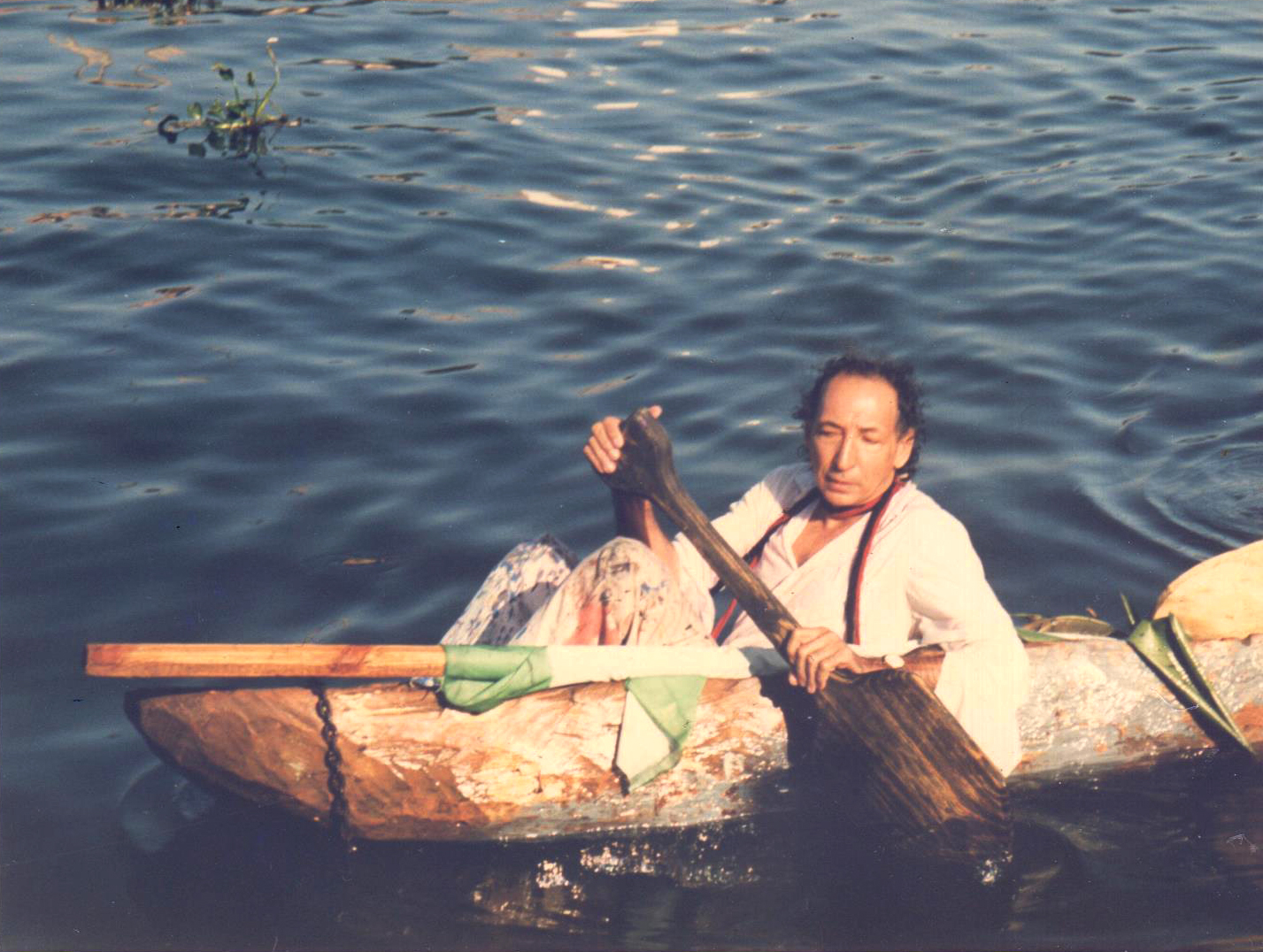
Quisqueya Lora: Silvano combined his art with his social commitment, which manifested in such actions as creating spaces for dialogue with marginalized popular sectors. He understood that he had a role as a vehicle for diverse cultural expressions. One of his great pains was the appalling social inequalities, so he always tried to combat the difficulties for access to experiences, information, and cultural knowledge. And it was never from a position of superiority but rather from correspondence and dialogue. There was a people with an enormous cultural richness that was obscured and silenced, to which he had the possibility of bringing other—let's say "academic"—forms of culture to which humble people usually did not have access.
Another element that was very present in his educational spaces was the subject of history. He frequently created mechanisms to make important historical identity elements visible, and several of his projects recover non-traditional, decolonial tales about indigenous Taino traditions and liberation struggles.
These experimental spaces sound like the germ of the Bienal Marginal. To what ends did he create this event? Why did it take place in the heart of a slum?
The Bienal Marginal served several functions, one of them was being a counterpart to the official biennial, and to a certain extent, to question the authority and mechanism of juries. The Bienal welcomed whoever had not had their artwork accepted—it was a biennial for the rejected. But Silvano also had excellent relationships with the artistic community, so the big names also brought their artworks and exhibited them there, in a small house of a shantytown in the colonial zone of Santo Domingo. It was also a community project, a work of months during which cultural managers and artists carried out dynamics with the community, and that is why they opened their doors: they felt part of the project, not used for but part of it.
There is something democratic in the gesture of giving a place to the rejected. Do you consider that the contemporary Dominican art scene is more democratic after Silvano Lora’s achievements?
I am not an art critic nor an artist, but I think it is. For example, the community of Santa Barbara, where the Bienal took place, was a ghetto in the heart of the colonial city of Santo Domingo where no one entered. With the Bienal Marginal, the community opened its doors and the middle and upper classes felt invited and safe to enter the slum. On the other hand, the community felt valued, observed not from a welfare or charity point of view but recognized, and that created enormous richness for them. Today, Santa Barbara is something else and it is because it suddenly became noticeable, it entered the radar as a viable space.
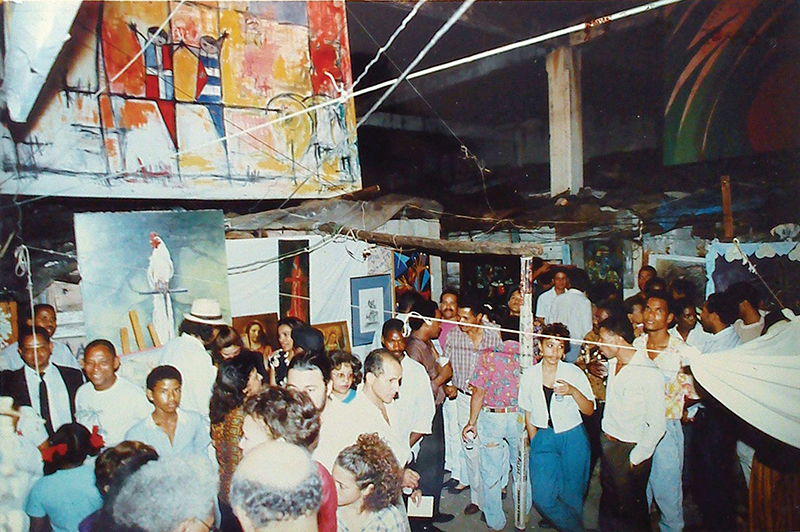
Do you know any artists who emerged from this ghetto in which Lora intervened or who have learned in his spaces?
I am sure there is at least a small generation there that ended up being artists or that now have a sensibility they did not have before. I think of the number of children who participated in the workshops and experiences that took place in the months before and after, throughout ten years. Of course, that needs to be studied. But there is no doubt that Silvano Lora left a legacy and that there is a faction of artists who take his experience as inspiration. It is very hard for performance artists not to have him as a reference, considering that he was one of the pioneers of action art in the Dominican Republic.
It is an encouraging experience of social transformation. On the other hand, his intensive work as an activist makes Silvano a particular figure, strongly linked to politics. What did Silvano Lora stand for?
The first thing there is to say is that Silvano Lora was a communist. That places him in a particular sphere of understanding of life and the world. Fundamentally, he fought against capitalism and the system of inequalities it establishes, against poverty, marginalization, and exploitation.
One must understand that he grew up amid the Trujillo dictatorship, so in his twenties, he emerged as an anti-Trujillo fighter, and then, in a kind of exile, he traveled the world and fed on many points of view. He studied Marxism and became a convinced communist, a practitioner, and an activist. Then came the April War—a civil war that took place in the Dominican Republic after the coup d'état against Juan Bosch, the first democratic government after the dictatorship—which ended with a U.S. invasion. After this experience, Silvano was transformed.
Before that, he was an artist with an international projection, but that revolutionary, combative experience marks and radicalizes him, directing his art towards social commitment. It resulted in him leading in April an artistic movement as potent and powerful as few: in four months surrounded by the gringos, the activism they developed with murals, posters, and signs, was fundamental, and from there, he also positions himself as a public artist.
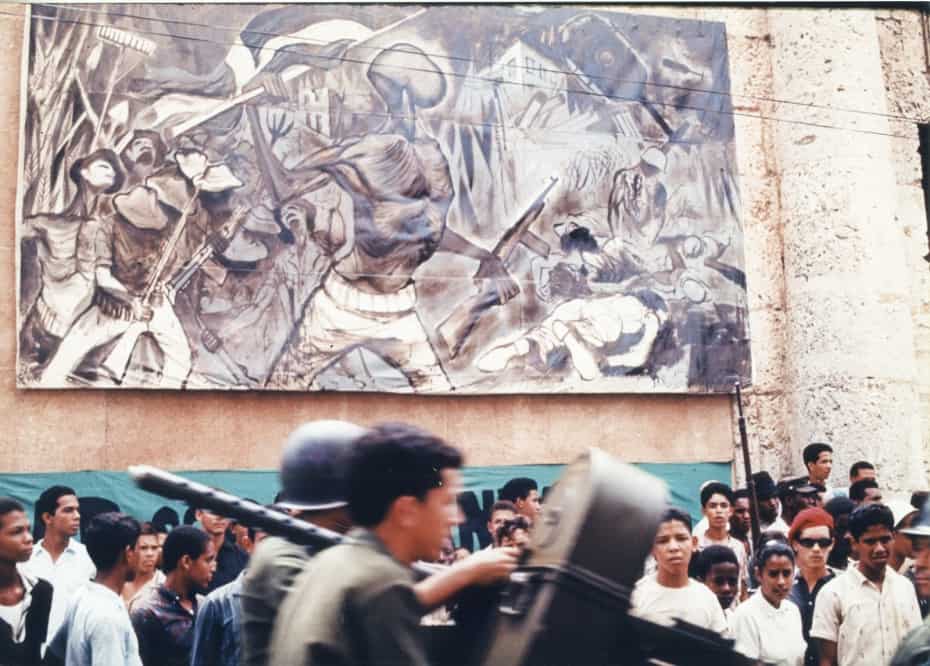
Undoubtedly, the struggles of April of 1965 are a reference when talking about Silvano Lora as an artist and activist. As a historian, what can you tell us about this meaningful event for the Dominican Republic? How is it linked to the artistic discourse?
After 30 years of a totalitarian dictatorship, everyone was fervently eager to get organized and demand, and so were the artists. My father was part of an artist group called Arte y Liberación, who theorized about the commitment they had decided to assume. It was also the time of enthusiasm for the Cuban revolution in the world and especially in Latin America, and many of these artists already had a link with the left. So what a golden opportunity to make a revolution!
But I think his lucidity lies in understanding and assuming his role. At first, their function was to produce propaganda but then you realize that they were not just making slogans, it was art, art on the streets, and in overwhelming amounts. Artists were doing what they knew how to do. While the initial speech of Arte y Liberación was radical, of the struggle for sovereignty, against imperialism and interventionism, it was not only a communist movement but a democratic movement that wanted to return to the democratically elected constitutional government. In the midst of the war, they launched a manifesto as a cultural movement signed by over seventy artists, who were integrated, taking part in cultural activities. After the war, came the ebb tide, and some stayed but we have to be honest: Silvano was left a bit alone, and he did not leave that trench anymore.

Presently in art, there is a particular interest—which we share—in deepening into topics such as decolonization and the insertion of popular cultures in the current art discourses, themes that were flagships for Silvano Lora more than 50 years ago. What do you think art can bring to a reality as important as cultural emancipation?
Art is many things. It is the avant-garde and it is the artists, and if they have the slightest emancipatory, questioning vision, they are already able to contribute with new approaches and narratives. Ideally, they should feed on local but also universal elements. Because perhaps art can reach places that the academic discourse cannot, to access the masses from other codes to get the message across. Silvano had a decolonial discourse, although I never heard him talk about 'decoloniality' and I don’t think he handled those theories, but he was dismantling the colonial narrative.
Do you have a story about those dismantling impulses that you could share?
In 1992, for the commemoration of the 500th anniversary of Columbus’ arrival, Santo Domingo was a neuralgic place for being the first Spanish settlement, so there were several plans. It was a year packed with activities. The first big action was in January, with a visit of the replicas of Columbus’ ships, which would reach the Ozama River. Silvano made an action that some describe as a performance but since the lines between his person, his life, and his art are not very clear, we call it a performance-action.
He came paddling from across the river in a traditional canoe full of flowers and fruits, together with another artist called Pachiro. They were as if representing the indigenous people who came to meet the Europeans, since the whole activity was organized around the Spaniards. And suddenly the Navy sees them, absolutely bewildered, they knock them down, and the mess is made! Attention is diverted from the fundamental act and everyone wants to see what is going on. Silvano is dragged out and he takes the opportunity to speak before all the microphones, soaking as he was. So he gives a decolonial speech that breaks with the paraphernalia and sets the tone for what later became the counter-narrative and the rejection of the celebrations of the 5th Centennial. It was a very symbolic gesture, even Quixotic, with a bit of madness, which many people still remember.
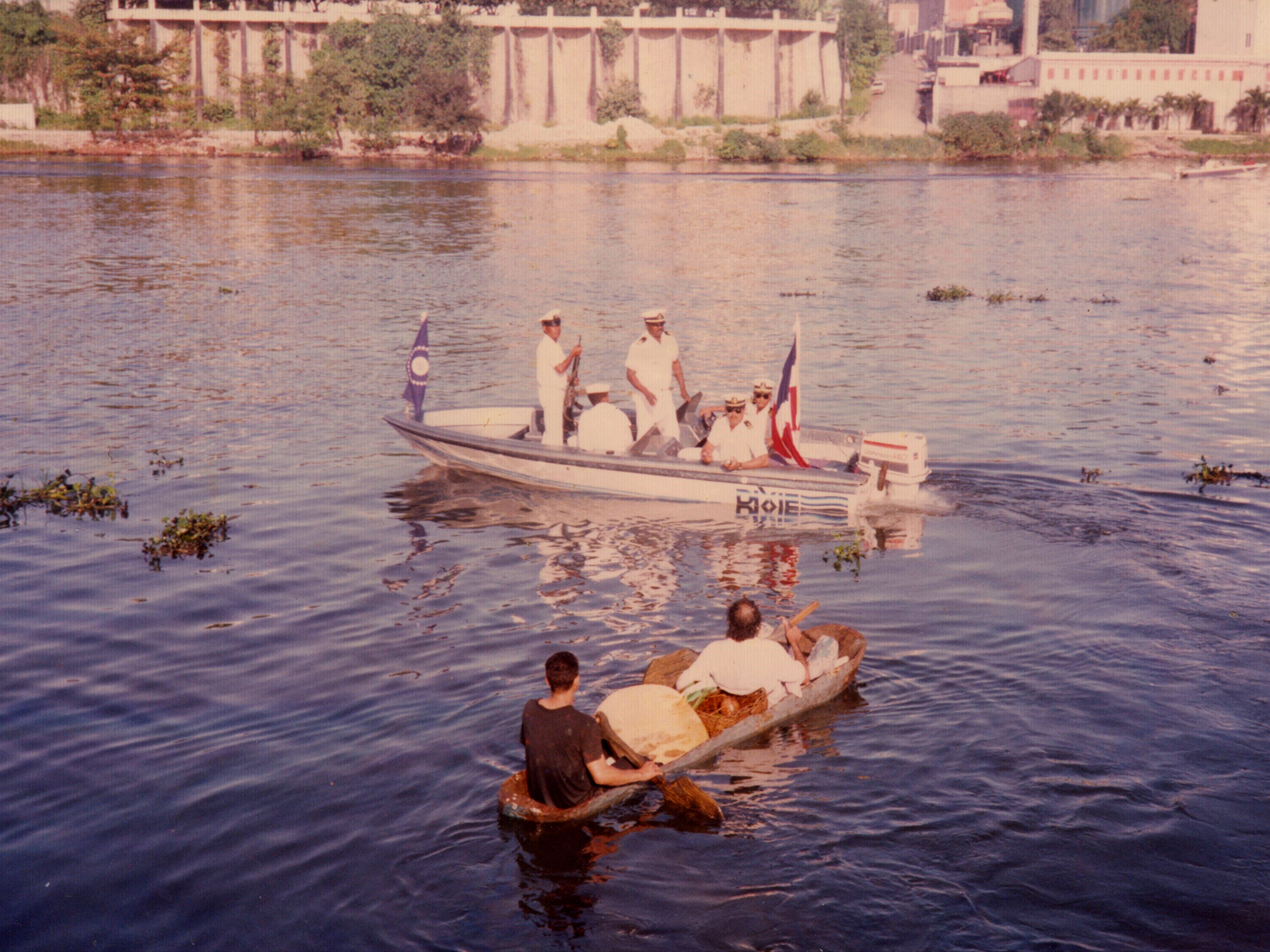
These actions question the boundaries between art and protest since they share a series of aesthetic interests that can be addressed in artistic terms due to their experimental nature. How were such events handled between the Dominican public and their creator? Did you witness any of such actions by Silvano Lora?
I did not witness it, I was a teenager and I was at home. I remember my father arrived that evening and we were very worried because the Ozama River is much polluted and we thought he could die of some weird stuff, so we bathed him with remedies. The press of the time tried to disregard the incident, giving it little space on the news, but it was something very shocking and the next day it was the talk of the town. People started making things up and adding details, so the story escalated, and in the end, it was talked about everywhere, and it is one of the most remembered actions until today.
For me, it set the tone for the debate, that is, it made the silence visible, that which was not being addressed in those activities. Then a whole movement of rejection and protest for the celebration of the 5th Centennial gained strength, demanding acknowledgment of the genocide, among other things.
Historically, education has been used as a political tool for consolidating totalitarian discourses. In the case of the Dominican Republic, during the second half of the twentieth century, it is known that education was meant to promote the cult and exaltation of the Trujillo dictatorship. How did Silvano Lora respond to this situation?
It is important to understand that we had a precarious democratic transition; that is, the democratic attempt of Juan Bosch’s presidency lasted only nine months. Then there was a coup d'état, and then the U.S. invasion guaranteed that Joaquín Balaguer—the last puppet president of Trujillo, whose racist government lasted until 1996—came to power. So, in that poor democratic transition, education was key indeed. While Balaguer ruled, for example, the issue of Trujillo was not dealt with at schools. The topic of Afro-descendants was made invisible and even denied in education until very recently. So there is a dramatic legacy of that authoritarianism.
To some extent, my father's activism aimed to fill some of those gaps, such as the marginalization of access to what could be called "elite" culture—which my father did not reject per se. In fact, he understood that people had to have access to, for example, classical music, but also to Afro rhythms, such as merengue or a series of cultural expressions that have that origin.
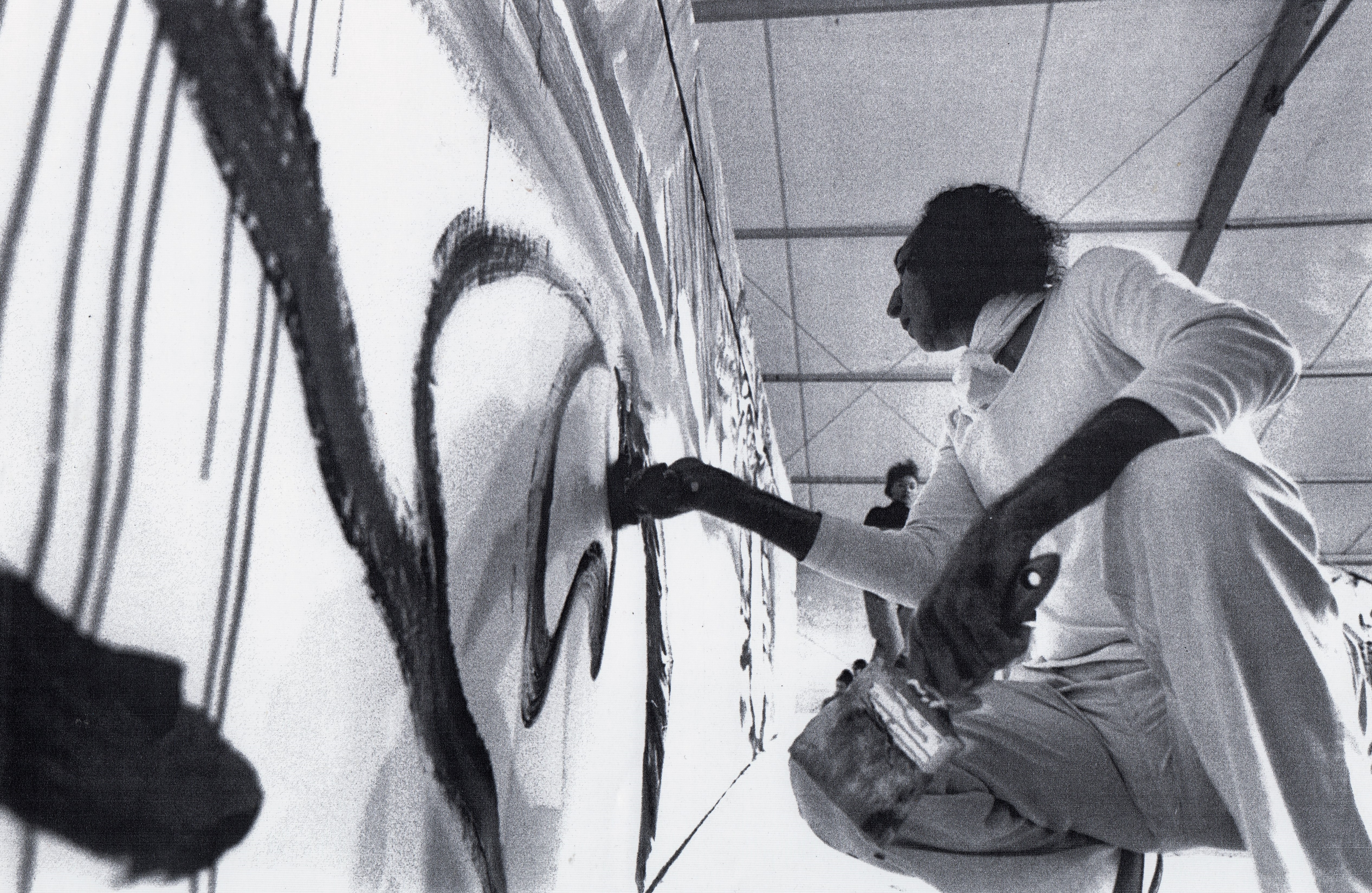


Lora's collage-mural work is usually associated with Arte Povera, a trend that vindicates the activation of precarious, existing, found materials (because "the Povera artist must work on the things of the world"). What things—materials, themes—did Silvano Lora work on? Is it possible to find other searches, beyond politics, in the art of Silvano Lora?
It is very difficult to separate it from politics. Silvano worked very systematically: there were periods when he did nothing, just plotting the next concept, and then suddenly it exploded, and he locked himself to work for a long time. He made large productions of artworks, and then came an exhibition, which always revolved around a theme. For example, there is a series called Hambre [Hunger], and one of the paintings is a huge steak. Another one was La pobreza frente a la riqueza [Poverty Facing Wealth], and he made paintings that showed, for example, a couple strolling down the beach in an idyllic landscape, and in one corner there was an empty plate and a starving child. He was very graphic in denouncing those realities.
My father took advantage of all the resources he could take advantage of. Perhaps there was some Arte Povera to it because, at some point, the canvas was no longer enough and he began to make collage works with paper, then to paste things on it, and then he needed objects and materials that he went to pick up from the garbage dumps. There is also much of his ecological interest in his need to reuse and resignify what he found.
Where do all these reflections, projects, and works made by Silvano Lora rest now?
Before he died, he created a foundation: the Taller Público. With the money he had, he bought a house, placed all his works in it, and convinced some people to commit to following his projects, the things that he had in his head. It was a gesture to preserve himself for posterity. We have a vast collection of his works at the Taller, and we try to continue his doing. We function within Silvano’s philosophy, following his spirit, but understanding that the richness lies in what we can do departing from his memory.
Finally, what lessons does Quisqueya Lora keep from Silvano?
I was absolutely marked by his notion of commitment, of not evading the realities that surround us. As a daughter, I critically admire many things; perhaps I do not quite share my father's options, but in essence, I think his legacy is commitment and consistency. He was utterly consistent with what he preached and what he practiced. Now, from a distance, I can see him and understand more and more the value of his life experience.

